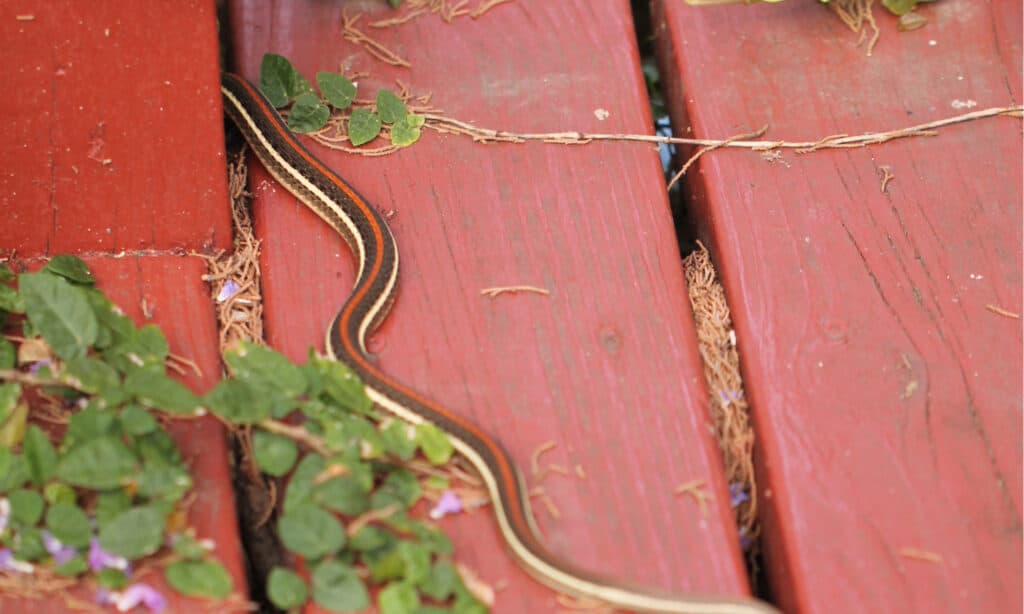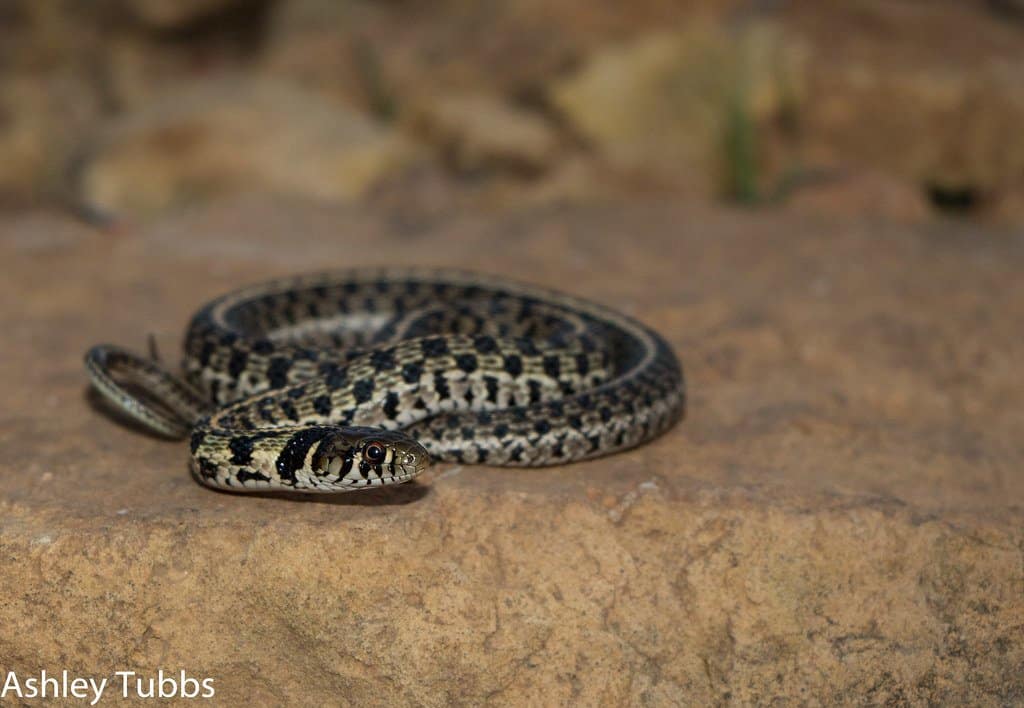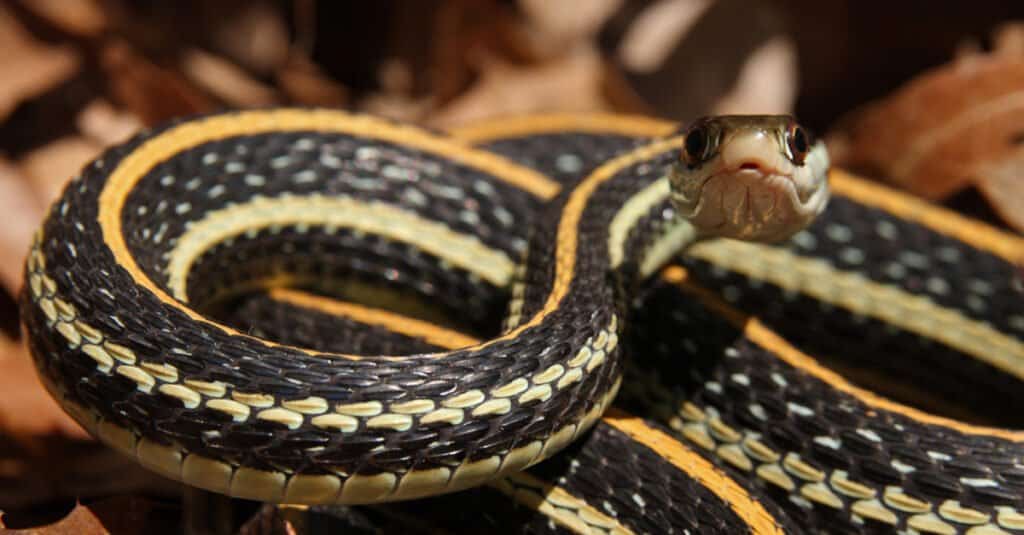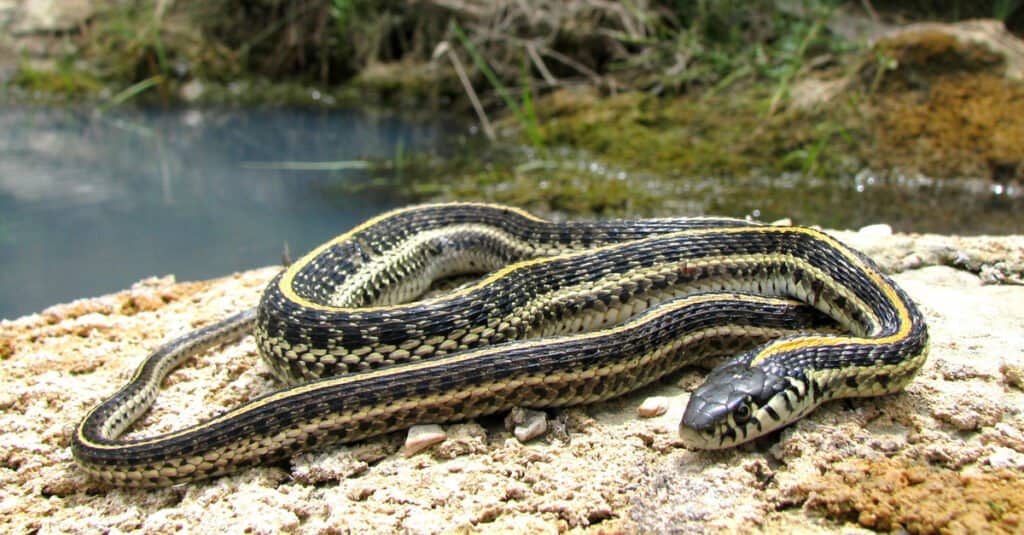Garter Snakes In Kansas
#mobileSnakeQuizControls { overflow: hidden; text-overflow: ellipsis; white-space: nowrap; }
@media (min-width: 481px) {
.mobile-top-content {
display: none;
}
}
#mobileTopContentCTACarouselControls { overflow: hidden; text-overflow: ellipsis; white-space: nowrap; }
.mobile-top-content .more { color: #fff; }
.mobile-top-content a { color: #fff; text-decoration: underline; }
.mobile-top-content a:hover { color: #fff; text-decoration: underline; }
@media (max-width: 480px) {
.mobile-top-content {
background-color: #06a10b;
color: #fff;
text-align: center;
/*height: 60px;
padding-top:5px;*/
font-size:80%;
/* display: block; */
margin: 0px -30px;
}
}
Much of Kansas falls within the great central plain of the United States. The western two-thirds of the state is an expanse of flatlands and gentle rolling undulations of the earth. The eastern third is more varied with hills and forests. Plenty of landscape for the garter snakes in Kansas. They share this land with abundant wildlife including the rare peregrine falcon and black-footed ferret, as well as the more common prairie dogs, moles, crows, deer and more. One of the 42 snake species in Kansas, let’s take a closer look at the garter snakes that call this state home.
Snakes in Kansas

Cathleen Wake Gorbatenko/Shutterstock.com
Garter snakes live among many other nonvenomous snakes in Kansas. The most common species in the region are the Eastern racer, the Northern water snake and the plains milk snake. There are 5 venomous snakes in the state, including cottonmouths and copperheads.
button.pulse {
transform: scale(1); animation: pulse 2s infinite;
box-shadow: 0 0 0 0 rgba(11, 247, 25, 1);
}
@keyframes pulse {
0% { transform: scale(0.90); box-shadow: 0 0 0 0 rgba(11, 247, 25, 0.5); }
60% { transform: scale(1); box-shadow: 0 0 0 15px rgba(11, 247, 25, 0); }
100% { transform: scale(0.90); box-shadow: 0 0 0 0 rgba(11, 247, 25, 0); }
}
You’re most likely to find garter snakes out and about in the summertime. They’re more active earlier in the spring and later in the fall than many other snakes. Although they’re an extremely cold-resistant species, they go into a period of inactivity called brumation during winter months. They usually brumate in crevices under rocks, in trees, or on the banks of streams. As they seek out their site to bed down while the weather’s cold, they’ll sometimes find their way into buildings and it can be hard for them to make their way back out.
Which Garter Snake Species live in Kansas?
There are 4 species of garter snakes in Kansas:
- Common garter snake (Thamnophis sirtalis)
- Red-sided garter snake (Thamnophis sirtalis parietalis)
- Red-striped garter snake (Thamnophis sirtalis annectens)
- Eastern garter snake (Thamnophis sirtalis sirtalis)
- Checkered Garter Snake (Thamnophis marcianus)
- Western Ribbon Snake (Thamnophis proximus)
- Plains Garter Snake (Thamnophis radix)
Common Garter Snake:

Matt Jeppson/Shutterstock.com
The common garter snake is prominent in the eastern two-thirds of Kansas. This snake is usually found near riparian areas. Adults of this species grow to be 16-28 inches in length. The maximum length for a common garter snake in this range is 52 inches, with a maximum weight of 14.5 ounces.
When identifying the common garter snake, look for 3 yellow-to-white stripes along a darker body. Although coloration varies, this is the most common. Some will have orange or red dorsal stripes that start as yellow or orange and transition towards the tail. The most widespread is the red-sided garter snake subspecies. There are rows of black blotches between the stripes producing a checkerboard pattern on a red background. Other subspecies will have yellow, green or blue background coloration. According to a scientific paper from the University of Kansas, the longitudinally striped pattern is adaptive, as it conceals motion as the snake moves through dense vegetation.
Garters in the southwestern portion of their range in Kansas are often the red-striped garter snake. They have a tan, black, yellow or green that alternates with the black blotches and a bright red or orange dorsal stripe. The eastern garter snake subspecies can be found on the Ozark Plateau of Cherokee County. They have a muted pattern and coloration and an orange dorsal stripe.
Checkered Garter Snake:

The checkered garter snake is considered a threatened species within the state of Kansas. They live along the southern border of Kansas, west of the Chikaskia River. Adults of this species grow to be 18-24 inches in length on average, and a maximum of 42 inches.
These snakes have olive, tan, brown or yellow-brown body coloration and three thin stripes. The dorsal stripe is often crowded by black spots beside it, giving it a jagged look. Checkered garter snakes have a cream to yellow belly. Their name comes from the checkerboard pattern of two rows of alternating dark rectangles between their stripes.
Western Ribbon Snake:

Ryan M. Bolton/Shutterstock.com
The western ribbon snake is widespread in the eastern third of Kansas. They grow to be 20-30 inches in length, and up to 50 inches maximum. They’re a slender snake of black, brown or olive with three light colored stripes down their bodies. Usually the dorsal stripe is yellow near the head and changes to orange at the tail, but sometimes it’s all yellow. They sometimes have a checkerboard pattern between the stripes. They have white bellies that are sometimes greenish or yellowish. In some populations, especially Seward and Meade counties, they’ll often have a dorsal stripe that is yellow or orange and turns to bright red at the tail tip. Western ribbon snakes have a distinctive vertical white bar in front of each eye.
These garters are almost always found near water. They live near ponds, marshes, rivers and lakes. These are fast snakes, but if they are caught they’re more likely to thrash about and expel musk than they are to bite. They have strong jaws to overpower their prey of fish, frogs, toads, salamanders and earthworms.
Plains Garter Snake:

Joe Farah/Shutterstock.com
Similar to other species found in this state, the plains garter snake grows to be 16-42 inches in length. They have olive green, brown or black bodies with an orange or yellow dorsal stripe down the back. Plains garters also have two greenish-yellow stripes on each side of their body. The areas between the stripes generally has an alternating double row of black spots. This snake has unique black bars around its mouth. Although garter snakes don’t pose a threat to humans, this species is particularly docile and is less likely than the common garter snake to bite when handled. However, like other garters it may secrete a strong musk as a deterrent.
Get More Familiar with the Garter Snake
Also called the grass snake, the garter snake is part of the Natricinnae subfamily. Most in this group, including garter snakes, give birth to live young. There are about 35 garter snake species. Their genus name Thamnophis is derived from the word thamnos for ‘bush or shrub,’ and ophio, meaning ‘snake.’ Like all snakes, garter snakes are ectotherms whose temperature is entirely dependent on environmental conditions. They regulate their bodies temperature by either absorbing or giving off heat. You can find garter snakes seeking shade in the heat of the day or sunning themselves on rocks when they need to warm up.
Garters are adaptable snakes that can thrive in a variety of habitats and eat an assortment of different prey. You can find them living in woods, open fields, plains and brush-filled areas. They like to live near water, at the edges of rivers, streams, ponds and lakes. Swamps and marshes are common places to spot them. You might see them basking in the sun on woodpiles, hedges and rocks. Garter snakes eat amphibians like frogs, toads and salamanders, as well as other small prey. They will eat earthworms, mice, small fish, slugs, insects and even small snakes.
Garter snakes in Kansas can be a welcome sight as they help to keep common pests at bay. However, these shy snakes do prefer to stay mostly out of sight. Their saliva subdues their prey as it is toxic for them, but they don’t have venom that is harmful to humans. If bitten, at the most you might experience some minimal swelling or a rash. As with all snakes, if you come across a garter snake in Kansas make sure to respect the serpent’s space.
Discover the “Monster” Snake 5X Bigger than an Anaconda
Every day A-Z Animals sends out some of the most incredible facts in the world from our free newsletter. Want to discover the 10 most beautiful snakes in the world, a “snake island” where you’re never more than 3 feet from danger, or a “monster” snake 5X larger than an anaconda? Then sign up right now and you’ll start receiving our daily newsletter absolutely free.
More from A-Z Animals
.more-snake-card-image { max-height:140px !important; }
#mobileSnakeQuizControls { overflow: hidden; text-overflow: ellipsis; white-space: nowrap; }
@media (min-width: 481px) {
.mobile-top-content {
display: none;
}
}
#mobileTopContentCTACarouselControls { overflow: hidden; text-overflow: ellipsis; white-space: nowrap; }
.mobile-top-content .more { color: #fff; }
.mobile-top-content a { color: #fff; text-decoration: underline; }
.mobile-top-content a:hover { color: #fff; text-decoration: underline; }
@media (max-width: 480px) {
.mobile-top-content {
background-color: #06a10b;
color: #fff;
text-align: center;
/*height: 60px;
padding-top:5px;*/
font-size:80%;
/* display: block; */
margin: 0px -30px;
}
}
Much of Kansas falls within the great central plain of the United States. The western two-thirds of the state is an expanse of flatlands and gentle rolling undulations of the earth. The eastern third is more varied with hills and forests. Plenty of landscape for the garter snakes in Kansas. They share this land with abundant wildlife including the rare peregrine falcon and black-footed ferret, as well as the more common prairie dogs, moles, crows, deer and more. One of the 42 snake species in Kansas, let’s take a closer look at the garter snakes that call this state home.
Snakes in Kansas

Cathleen Wake Gorbatenko/Shutterstock.com
Garter snakes live among many other nonvenomous snakes in Kansas. The most common species in the region are the Eastern racer, the Northern water snake and the plains milk snake. There are 5 venomous snakes in the state, including cottonmouths and copperheads.
button.pulse {
transform: scale(1); animation: pulse 2s infinite;
box-shadow: 0 0 0 0 rgba(11, 247, 25, 1);
}
@keyframes pulse {
0% { transform: scale(0.90); box-shadow: 0 0 0 0 rgba(11, 247, 25, 0.5); }
60% { transform: scale(1); box-shadow: 0 0 0 15px rgba(11, 247, 25, 0); }
100% { transform: scale(0.90); box-shadow: 0 0 0 0 rgba(11, 247, 25, 0); }
}
You’re most likely to find garter snakes out and about in the summertime. They’re more active earlier in the spring and later in the fall than many other snakes. Although they’re an extremely cold-resistant species, they go into a period of inactivity called brumation during winter months. They usually brumate in crevices under rocks, in trees, or on the banks of streams. As they seek out their site to bed down while the weather’s cold, they’ll sometimes find their way into buildings and it can be hard for them to make their way back out.
Which Garter Snake Species live in Kansas?
There are 4 species of garter snakes in Kansas:
- Common garter snake (Thamnophis sirtalis)
- Red-sided garter snake (Thamnophis sirtalis parietalis)
- Red-striped garter snake (Thamnophis sirtalis annectens)
- Eastern garter snake (Thamnophis sirtalis sirtalis)
- Checkered Garter Snake (Thamnophis marcianus)
- Western Ribbon Snake (Thamnophis proximus)
- Plains Garter Snake (Thamnophis radix)
Common Garter Snake:

Matt Jeppson/Shutterstock.com
The common garter snake is prominent in the eastern two-thirds of Kansas. This snake is usually found near riparian areas. Adults of this species grow to be 16-28 inches in length. The maximum length for a common garter snake in this range is 52 inches, with a maximum weight of 14.5 ounces.
When identifying the common garter snake, look for 3 yellow-to-white stripes along a darker body. Although coloration varies, this is the most common. Some will have orange or red dorsal stripes that start as yellow or orange and transition towards the tail. The most widespread is the red-sided garter snake subspecies. There are rows of black blotches between the stripes producing a checkerboard pattern on a red background. Other subspecies will have yellow, green or blue background coloration. According to a scientific paper from the University of Kansas, the longitudinally striped pattern is adaptive, as it conceals motion as the snake moves through dense vegetation.
Garters in the southwestern portion of their range in Kansas are often the red-striped garter snake. They have a tan, black, yellow or green that alternates with the black blotches and a bright red or orange dorsal stripe. The eastern garter snake subspecies can be found on the Ozark Plateau of Cherokee County. They have a muted pattern and coloration and an orange dorsal stripe.
Checkered Garter Snake:

The checkered garter snake is considered a threatened species within the state of Kansas. They live along the southern border of Kansas, west of the Chikaskia River. Adults of this species grow to be 18-24 inches in length on average, and a maximum of 42 inches.
These snakes have olive, tan, brown or yellow-brown body coloration and three thin stripes. The dorsal stripe is often crowded by black spots beside it, giving it a jagged look. Checkered garter snakes have a cream to yellow belly. Their name comes from the checkerboard pattern of two rows of alternating dark rectangles between their stripes.
Western Ribbon Snake:

Ryan M. Bolton/Shutterstock.com
The western ribbon snake is widespread in the eastern third of Kansas. They grow to be 20-30 inches in length, and up to 50 inches maximum. They’re a slender snake of black, brown or olive with three light colored stripes down their bodies. Usually the dorsal stripe is yellow near the head and changes to orange at the tail, but sometimes it’s all yellow. They sometimes have a checkerboard pattern between the stripes. They have white bellies that are sometimes greenish or yellowish. In some populations, especially Seward and Meade counties, they’ll often have a dorsal stripe that is yellow or orange and turns to bright red at the tail tip. Western ribbon snakes have a distinctive vertical white bar in front of each eye.
These garters are almost always found near water. They live near ponds, marshes, rivers and lakes. These are fast snakes, but if they are caught they’re more likely to thrash about and expel musk than they are to bite. They have strong jaws to overpower their prey of fish, frogs, toads, salamanders and earthworms.
Plains Garter Snake:

Joe Farah/Shutterstock.com
Similar to other species found in this state, the plains garter snake grows to be 16-42 inches in length. They have olive green, brown or black bodies with an orange or yellow dorsal stripe down the back. Plains garters also have two greenish-yellow stripes on each side of their body. The areas between the stripes generally has an alternating double row of black spots. This snake has unique black bars around its mouth. Although garter snakes don’t pose a threat to humans, this species is particularly docile and is less likely than the common garter snake to bite when handled. However, like other garters it may secrete a strong musk as a deterrent.
Get More Familiar with the Garter Snake
Also called the grass snake, the garter snake is part of the Natricinnae subfamily. Most in this group, including garter snakes, give birth to live young. There are about 35 garter snake species. Their genus name Thamnophis is derived from the word thamnos for ‘bush or shrub,’ and ophio, meaning ‘snake.’ Like all snakes, garter snakes are ectotherms whose temperature is entirely dependent on environmental conditions. They regulate their bodies temperature by either absorbing or giving off heat. You can find garter snakes seeking shade in the heat of the day or sunning themselves on rocks when they need to warm up.
Garters are adaptable snakes that can thrive in a variety of habitats and eat an assortment of different prey. You can find them living in woods, open fields, plains and brush-filled areas. They like to live near water, at the edges of rivers, streams, ponds and lakes. Swamps and marshes are common places to spot them. You might see them basking in the sun on woodpiles, hedges and rocks. Garter snakes eat amphibians like frogs, toads and salamanders, as well as other small prey. They will eat earthworms, mice, small fish, slugs, insects and even small snakes.
Garter snakes in Kansas can be a welcome sight as they help to keep common pests at bay. However, these shy snakes do prefer to stay mostly out of sight. Their saliva subdues their prey as it is toxic for them, but they don’t have venom that is harmful to humans. If bitten, at the most you might experience some minimal swelling or a rash. As with all snakes, if you come across a garter snake in Kansas make sure to respect the serpent’s space.
Discover the “Monster” Snake 5X Bigger than an Anaconda
Every day A-Z Animals sends out some of the most incredible facts in the world from our free newsletter. Want to discover the 10 most beautiful snakes in the world, a “snake island” where you’re never more than 3 feet from danger, or a “monster” snake 5X larger than an anaconda? Then sign up right now and you’ll start receiving our daily newsletter absolutely free.







